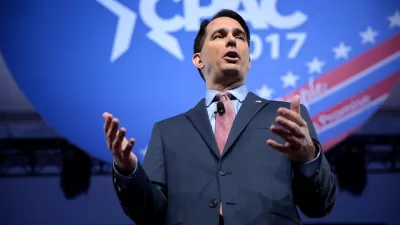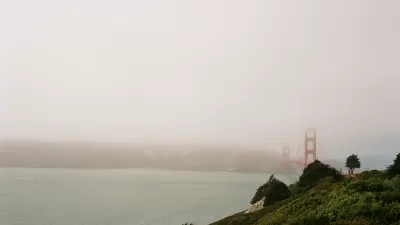Ozone pollution is worsening in five counties in Southern California, and the Air Quality Management District doesn't know why.

"Southern California's ozone pollution has worsened over the last two years, even as regulators say emissions are declining," reports Tony Barboza, who covers air quality and the environment with a focus on Southern California for the Los Angeles Times, on Nov. 15.
Ozone, the harmful gas in smog that inflames the lungs and triggers asthma attacks and other health problems, has violated federal health standards 145 days this year across Los Angeles, Orange, Riverside and San Bernardino counties, air monitoring data show. That’s up from 132 ozone violation days last year and 113 in 2015.
The South Coast Air Quality Management District, which regulates air quality in most of the four-county region, points to hotter temperature and inversions which trap pollution close to the ground. Public health and environmental groups disagree, questioning whether the emissions reductions estimates are accurate, and wanting the district to get tougher on stationary source emitters, like power plants and refineries.
Emissions dropping
Air quality officials say their projections show emissions of smog-forming pollutants continue dropping dramatically. And as mandates for cleaner cars and trucks continue to kick in, they expect ozone levels to decline over the long term.
Is climate change to blame?
Regulators and scientists say it is too soon to say whether climate change is driving recent increases in California smog. Researchers predict global warming will complicate efforts to clean air pollution by increasing the number of hot days, which speed up the photochemical reactions that generate ozone. But a few years of data is not enough to detect the fingerprints of global warming, they say
Ozone pollution difficult to regulate
Unlike other forms of air pollution, ozone, or smog, is formed in the lower atmosphere in the presence of heat and sunlight. Reducing ozone means reducing emissions of the two main contributors, nitrogen oxides (NOx) and volatile organic compounds.
Cut them in the wrong proportion and you may see no ozone reduction at all or even an increase, said Michael Kleeman, professor of civil and environmental engineering at UC Davis.
At the same time, both the quantity and intensity of heat and sunlight exacerbate ozone formation, so there are lots of variables to consider.
Transformation of transportation sector
Regulators say cleaning the air to federal standards will require a massive transformation of California’s transportation sector, which releases most of the state’s pollution. Gas and diesel engines must be replaced with zero- and near-zero-emission battery electric and hydrogen fuel cell engines and other emerging technologies.
That's fodder for Assemblyman Phil Ting (D-San Francisco) who plans to introduce legislation in February to ban sales of passenger vehicles powered by gasoline and diesel fuel by 2040.
The region's largest source of emissions, the ports of Los Angeles and Long Beach, are headed in that direction with the adoption of the Clean Air Action Plan (pdf) earlier this month. It encourages "the phase-out of diesel trucks in favor of natural gas and, ultimately, zero-emissions trucks and cargo-handling equipment over the next two decades," reported Barboza on Nov. 2.
Projections show most of the 17,000 trucks serving the ports becoming near-zero, or natural gas-fueled, by 2024. Zero-emissions trucks would become the majority by 2036.
FULL STORY: Southern California smog worsens for second straight year despite reduced emissions

Planetizen Federal Action Tracker
A weekly monitor of how Trump’s orders and actions are impacting planners and planning in America.

Maui's Vacation Rental Debate Turns Ugly
Verbal attacks, misinformation campaigns and fistfights plague a high-stakes debate to convert thousands of vacation rentals into long-term housing.

San Francisco Suspends Traffic Calming Amidst Record Deaths
Citing “a challenging fiscal landscape,” the city will cease the program on the heels of 42 traffic deaths, including 24 pedestrians.

Amtrak Rolls Out New Orleans to Alabama “Mardi Gras” Train
The new service will operate morning and evening departures between Mobile and New Orleans.

The Subversive Car-Free Guide to Trump's Great American Road Trip
Car-free ways to access Chicagoland’s best tourist attractions.

San Antonio and Austin are Fusing Into one Massive Megaregion
The region spanning the two central Texas cities is growing fast, posing challenges for local infrastructure and water supplies.
Urban Design for Planners 1: Software Tools
This six-course series explores essential urban design concepts using open source software and equips planners with the tools they need to participate fully in the urban design process.
Planning for Universal Design
Learn the tools for implementing Universal Design in planning regulations.
Heyer Gruel & Associates PA
JM Goldson LLC
Custer County Colorado
City of Camden Redevelopment Agency
City of Astoria
Transportation Research & Education Center (TREC) at Portland State University
Jefferson Parish Government
Camden Redevelopment Agency
City of Claremont




























